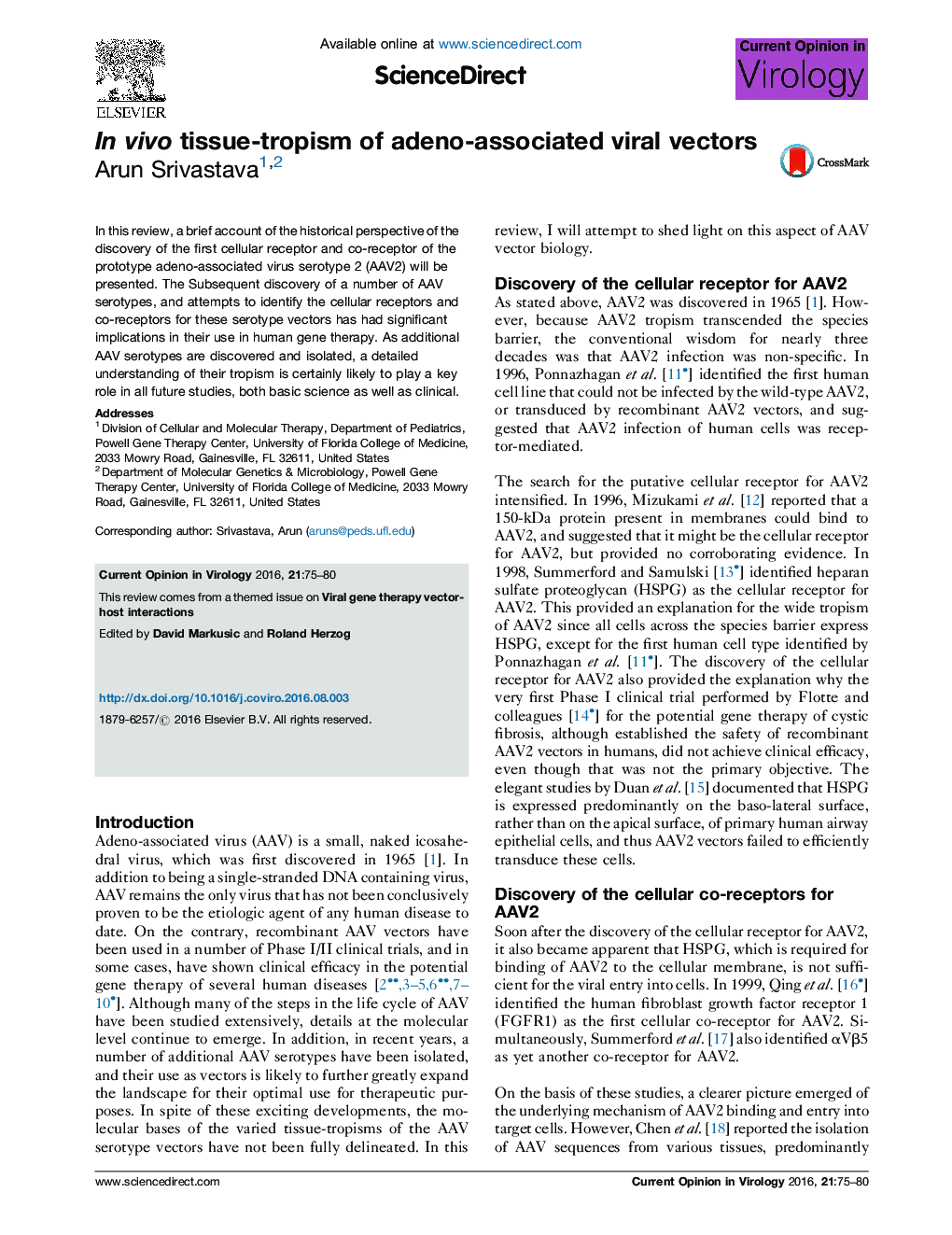| Article ID | Journal | Published Year | Pages | File Type |
|---|---|---|---|---|
| 2473148 | Current Opinion in Virology | 2016 | 6 Pages |
•AAV is a non-pathogenic virus, and recombinant AAV vectors have proven to be highly efficient for gene delivery to a wide variety of cell types, tissue, and organs in small and large animal models.•A number of AAVserotype vectorshavenow become available, with distinct tissue-tropism, and long-term transgene expression, and this repertoire is likely to expand.•An ever increasing number of rationally designed and optimized novel AAV serotype vectors capable of targeting specific tissues and organs, is likely to further expand their therapeutic landscape.•The safety of recombinant AAV vectors has been established in 162 Phase I/II/III clinical trials to date, and clinical efficacy has also been achieved in at least 6 human diseases.
In this review, a brief account of the historical perspective of the discovery of the first cellular receptor and co-receptor of the prototype adeno-associated virus serotype 2 (AAV2) will be presented. The Subsequent discovery of a number of AAV serotypes, and attempts to identify the cellular receptors and co-receptors for these serotype vectors has had significant implications in their use in human gene therapy. As additional AAV serotypes are discovered and isolated, a detailed understanding of their tropism is certainly likely to play a key role in all future studies, both basic science as well as clinical.
